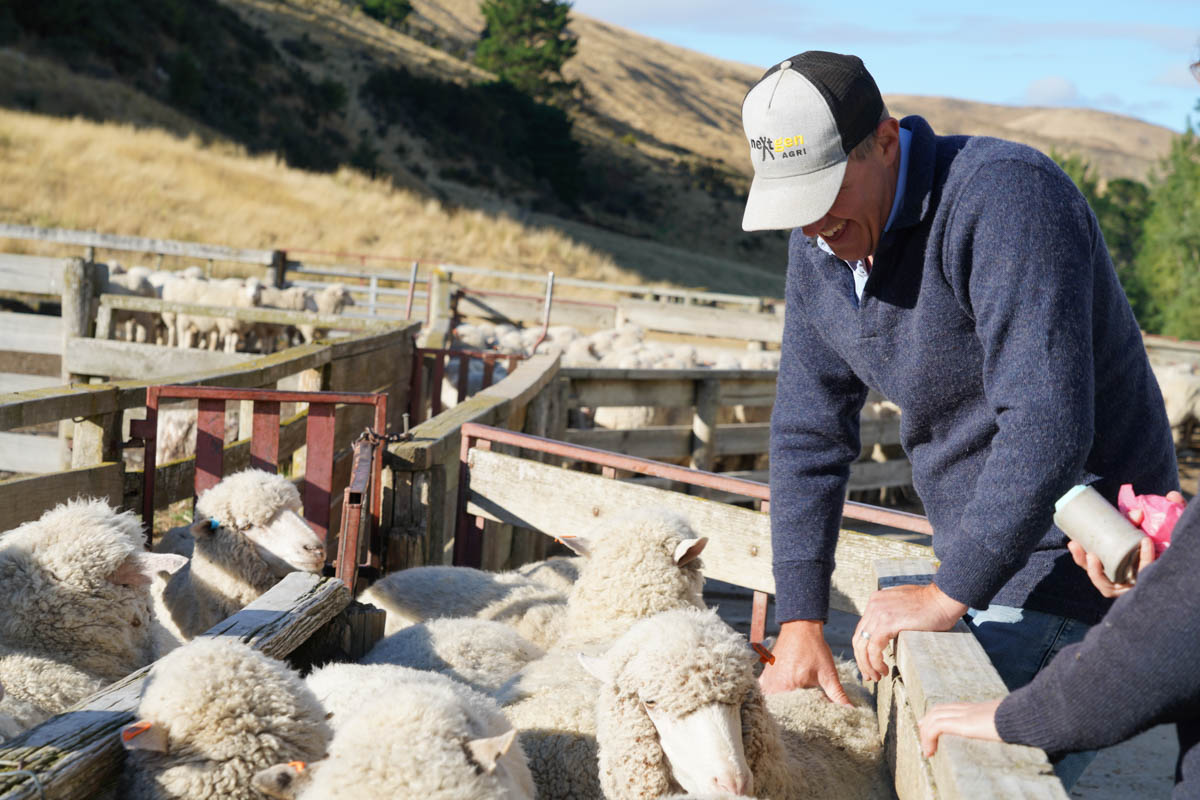North Canterbury sheep and beef farmer James Hoban was introduced to body condition scoring after a poor scanning.
Body condition scoring (BCS) ewes is a great example of something we know works, but many of us don’t do. There are various reasons why such an obvious and proven change is not implemented. In our case it has been partly generational, partly where information has come from, but mostly time and workload.
I am lucky working with my father that generational differences are usually settled successfully – he is more open-minded than some farmers of his generation. That said, picking an idea up is one thing, convincing the rest of the business partners that it is the right move can be quite another.
We have always taken light ewes out at scanning. It took us a long time to accept that by then it is too late to maximise the lambing opportunities. As the vets keep telling us, BCS at mating influences everything – from lambing percentage and lamb birthweight to the ewe’s ability to do the job again next year.
The first time I turned the ‘scanning light ewe draft’ into a hands-on exercise my ‘employer’ waited until I was 100 metres away from the yards and boxed them all up again. Introducing an extra job has taken us some time to accept.
Despite the numerous times we had been told about the benefits and simplicity of using BCS, we never quite managed to do it until the wheels fell off and we had some pressure on to fix a problem.
The main reason we have finally made the effort to introduce a change is that we had a poor scanning in ewes we bought last year. This was for a number of reasons including the severe dry at the time the rams went out, just 10 days after we bought the ewes.
The same year we enjoyed a good lambing in our stud ewes, despite the fact they underwent a shift of farms just before mating so I will not accept that our issue is as simple as blaming our chosen breed.
Despite the numerous times we had been told about the benefits and simplicity of using BCS, we never quite managed to do it until the wheels fell off and we had some pressure on to fix a problem. There is nothing like a crisis to inspire action.

Another factor driving change has been where we have got our information from. Once we had a problem, I talked to farmers who I trust and who get good performance out of their flocks. Hearing it from those farmers was inevitably more powerful than when it comes from an industry adviser or stranger.
When we condition scored all our ewes after weaning it would be fair to say there were two sceptics in the yards, standing at the back of the race while I put my hands on the ewes, making remarks about the merits of what we were doing and lamenting the time we might have saved by taking ewes off at the drafting gate.
Once we finished, all involved admitted with a degree of surprise that the light mob was not obviously distinguishable to the eye and some ewes were deceiving. We agreed that if we had tried to run them off at the gate we would have got a different result. We also agreed that it was a much quicker job than we expected.
There was no great science in how we scored ewes.
I picked up a friend’s approach where instead of worrying about the specific numbers he went for practical groups of “needs more feed” and “in good order already”. I don’t know if what I considered the condition score cut-off was the same as what someone else would have done but I was assured by several other farmers that as long as we were consistent it would be a good start. This approach resulted in about 30% of our ewes heading into a light mob on to lucerne and chicory and a manageable number of mobs. Our best feed went further and the light ewes improved.
Ideally, we should have done it several times, but with a kind summer and autumn we did not. In a year where feed was tighter, we could have taken the ewes with the most condition out into a separate mob and held them back too.
We did it in a way that was simple, practical and repeatable – that is a good starting point for change – we can look at things more intensely over time rather than rushing into anything too new overnight. Radical changes are harder to sustain than incremental tweaks.
After a dream autumn there have been no excuses for light ewes at mating but we will face plenty of years when summer and autumn dry makes feeding ewes tough. Preferentially feeding light ewes makes good sense. Knowing that and doing it are too different things.
- James and Maria Hoban farm 2500 Corriedale ewes and 150 cattle on a 770ha coastal farm at Waipara in Canterbury. They have two children Alice (6) and William (4).




